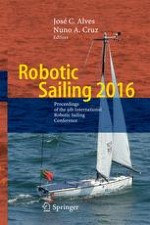2017 | OriginalPaper | Buchkapitel
Using a Controlled Sail and Tail to Steer an Autonomous Sailboat
verfasst von : Thomas Augenstein, Arjan Singh, Jesse Miller, Alex Pomerenk, Alec Dean, Andy Ruina
Erschienen in: Robotic Sailing 2016
Aktivieren Sie unsere intelligente Suche, um passende Fachinhalte oder Patente zu finden.
Wählen Sie Textabschnitte aus um mit Künstlicher Intelligenz passenden Patente zu finden. powered by
Markieren Sie Textabschnitte, um KI-gestützt weitere passende Inhalte zu finden. powered by
